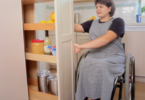According to Worksafe Victoria, 95% of healthcare workers have experienced violence in the workplace. This abuse can be physical or verbal. Violence and aggression can come from patients, residents, visiting friends and family and even bystanders. Employers have an obligation to ensure that their staff feel safe and supported at work.
Who is considered a lone worker?
Anyone who works on their own is classified as a lone worker. Community healthcare workers are one of the industries most at risk for workplace abuse, especially people who work at night or outside business hours or provide care to patients who are distressed or ill.
Why are lone healthcare workers at higher risk?
Medical professionals and social workers often conduct visits to patients’ homes, especially those who work in regional areas. In rural areas there often isn’t much access to medical assistance or help. As a consequence, healthcare workers are working alone for long periods of time.
Ways to keep lone healthcare workers safe
There is no single method that can guarantee the safety of lone healthcare workers but there are ways to get help fast and hopefully de-escalate tricky situations.
A duress alarm
A duress alarm is a small alarm that can be worn by healthcare workers at all times. The help button can be pressed quickly and easily if a situation arises. There are different types of duress alarms but the safest type of alarm is connected to a response centre. Once the alarm has been pressed it will alert an operator who will talk to the user via the alarm and assess the situation. If necessary, the police or ambulance can be called by the operator.
A duress alarm works anywhere where there is mobile phone coverage. If the alarm is in an underground car park or anywhere else that doesn’t have reception it may not work. These alarms allow healthcare workers to go about their job with more confidence because they know that with the press of a button, help is at hand. It’s important that if employers supply their staff with duress alarms they also train them on how to properly use their duress alarms.
Provide lone worker training
Any healthcare worker should be trained properly before heading off to perform any duties by themselves. Some things that should be addressed during training include:
– How to deescalate a situation
– Avoidance strategies
– Be aware if the client has a history of substance abuse or criminal history
– Understand the client’s care plan
– Tactics on how to deal with challenging client behaviour
– How to report all hazards including abuse and threats, and who to report these to
Employers should provide their employees with adequate training. This Home Visiting Risk Assessment Tool is useful for any employees who are in need of a template to look at before conducting a home visit.
Make the environment safer
After conducting an assessment, the healthcare worker may have identified a number of risks and hazards to either themselves and/or the patient. Consider redesigning or refurbishing the existing environment so they are more secure. For example, remove any potential weapons from the environment (scissors, staplers, knives, etc.) or remove any large furniture items that could be used as weapons.
Don’t carry drugs
Carrying drugs can make a healthcare worker a potential target. If drugs are carried, make sure that they are in a locked box. Wear minimal jewellery. Don’t wear necklaces or scarves that could potentially become a choking hazard.
Work-related stress
Verbal and physical abuse can take a massive toll on a person’s health and wellbeing. Violence doesn’t necessarily come from other people, pets and animals can pose a risk too. Ensure that all pets are locked up before you enter the property. Any lone healthcare worker who has experienced any form of violence should immediately report it to their superior. Working alone can be isolating. Not feeling safe can cause mental health problems, stress and anxiety. If you have experienced anything upsetting at work, please seek help immediately.
Final words
Lone healthcare workers face many challenges and obstacles in their job. Not only do they have to perform tasks that healthcare professionals do in clinics and hospitals, they usually don’t have any help close at hand. The most important thing for anyone working alone is to identify any risks before doing a job that they feel unsure or unsafe about. Employers should supply adequate training and support for their lone workers who are out conducting home visits.
“The opinions expressed by BizWitty Contributors are their own, not those of BizCover and should not be relied upon in place of appropriate professional advice. Please read our full disclaimer."







